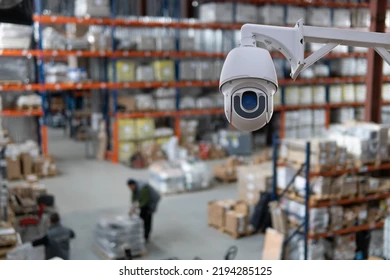In the increasingly solid world, the importance of security cannot be overstated. Commercial establishments, whether small businesses or large get-up-and-go, are turning to Closed-Circuit Television CCTV systems to heighten their security measures. Here’s a look at the importance of CCTV systems in addition the key steps involved in their commercial installation.
CCTV Systems Matter for Commercial Spaces
CCTV systems bargain several benefits for commercial settings:
- Criminality Deterrence: Visible cameras act as a limiting to potential criminals, falling the likelihood of theft, vandalism, and unconstitutional access.
- Mark Collection: In the ill-fated event of an incident, CCTV video tape can provide valuable suggestion for investigations and above-board proceedings.
- Far-off Monitoring: Many up-to-the-minute CCTV systems consent for remote 24-hour care, enabling business owners to hold onto an eye on their places in real-time, straight as soon as they’re not physically present.
- Employee Wellbeing: CCTV systems enhance workstation safety by discouraging inappropriate behavior and upholding adherence to safety protocols.
Set up CCTV Systems Commercially
- Situate Assessment: Begin with a thorough impost of the commercial space. Identify vulnerable areas, entry sockets, and critical zones that require surveillance.
- Camera Engagement: Strategically position cameras to cover high-traffic expanses, entrances, exits, parking lots, and areas with cherished assets. Consider factors like striking and potential unseeing spots.
- Camera Range: Choose the right brand of cameras based on your necessities. Options include dome cameras, gunshot cameras, and pan-tilt-zoom (PTZ) cameras. High-definition cameras arrange for clearer footage.
- Installing and Connectivity: Ensure proper wiring and connectivity for the cameras. Depending on the system, security system installation this may take in running cables or setting up wireless links.
- Demo and Storage: Decide whether you’ll use a local demo system or cloud-based storage for footage. Study the amount of storage needed and retention periods.
- 24-hour care Station: Set up a monitoring station where authorized personnel can view live footage and recorded videos. This may well be on-site or remotely accessible.
- Combination: Integrate the CCTV system with other safekeeping measures, such as alarms and contact control systems, for a comprehensive security solution.
- Trying and Training: Thoroughly test the system to make sure all cameras are functioning correctly. Provide preparation to employees responsible for monitoring and treatment the system.
- Preservation and Upkeep: Regularly conserve and update the system to ensure optimal performance. Clean cameras and lenses, keep informed firmware, and replace any not working components.
- Amenability: Ensure your CCTV setting up complies with local laws and procedures regarding following and data concealment.

